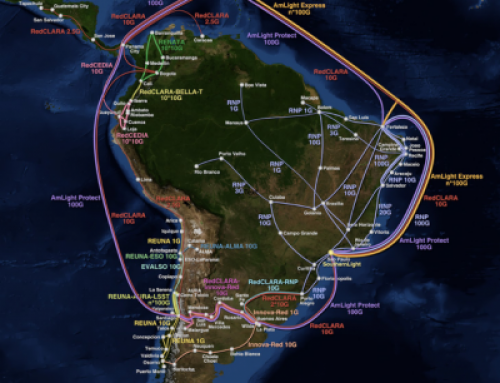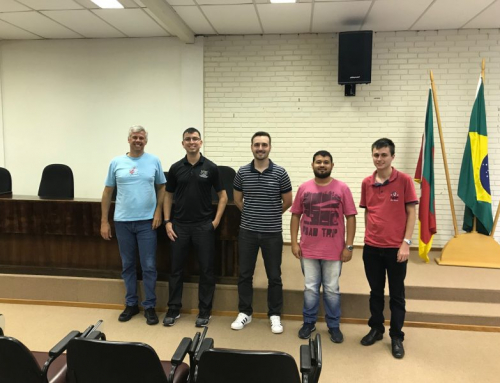The internet has and continues to revolutionize people’s lives. It connects families who live far from each other. It helps prioritize work tasks. It allows consumers to shop without having to leave their homes. It’s a way for some to obtain a degree through online education.
It’s hard to imagine a world without the internet. But with the rise of machine learning and the Internet of Things (IoT), today’s internet faces serious challenges.
Through a $20 million grant from the National Science Foundation (NSF), a collaborative project has begun among universities nationwide to enable a faster and more secure internet. FIU is one of the universities selected to participate.
The project, called FABRIC, will provide a coast-to-coast testbed for reimagining how data can be stored, computed and moved through shared infrastructure. Researchers will explore and test novel internet frameworks to help determine the internet architecture of the future.
“We look forward to FABRIC enabling researchers throughout the nation to develop and test new networking technologies and capabilities,” said Erwin Gianchandani, acting assistant director for computer and information science and engineering at the National Science Foundation. “This project will lead to novel paradigms for next-generation networks and services, giving rise to future applications advancing science and the economy.”
FABRIC will consist of storage, computational and network hardware nodes interconnected by high speed, dedicated optical links. These nodes will be deployed across the country and also in major national research facilities, universities and supercomputing centers to generate and process scientific data sets.
 The infrastructure will enable cutting-edge research in networking, cybersecurity, machine learning, distributed computing and storage systems. It will explore the balance between the amount of information a network maintains, the network’s ability to process information and its scalability, performance and security.
The infrastructure will enable cutting-edge research in networking, cybersecurity, machine learning, distributed computing and storage systems. It will explore the balance between the amount of information a network maintains, the network’s ability to process information and its scalability, performance and security.
Julio Ibarra, assistant vice president of technology augmented research at FIU’s Division of Information Technology, and Alex Afanasyev, assistant professor for the School of Computing and Information Sciences within the College of Engineering & Computing, are representing FIU as FABRIC contributors and senior personnel.
“FIU is … providing infrastructure development of technology software for future evolution of the internet,” said Ibarra, who is the lead on fabric node operations.
Afanasyev is overseeing the effort in deploying new addressable networking technologies.
Both agree with Ilya Baldin—director of Network Research & Infrastructure at RENCI at the University of North Carolina (UNC)-Chapel Hil, the lead institution. The internet is starting to show its age and limitations. If computer scientists were to start over today, the internet would be designed differently.
The internet came about during the Cold War, a weapon of sorts and a tool for the U.S. government to use. Scientists and military experts were concerned that an attack on the nation’s communications system could happen. Researchers needed another way to communicate and share confidential data.
Through a series of government-funded programs between the 1960s and 1980s, ARPAnet was created, a system which sent information from one computer to another by breaking down the data into packets before sending it to the desired destination. In 1969, only four computers were connected to the ARPAnet. The inventors behind this could have never imagined their system would be the foundation for the internet that we know and use today.
Initially used solely for research, the internet was commercialized in the 1980s and in the 1990s; the World Wide Web, a subset of the internet, was introduced by Tim Berners-Lee, a Swiss computer programmer. As any system, the internet needs to continue evolving in order to remain relevant.
FABRIC also will provide research opportunities for FIU graduate students. “New courses within the curriculum will be developed for our engineering and computer science students to train them for the digital revolution,” Afanasyev said.
The construction phase of the project is expected to last four years. Year one focuses on finalizing deployment plans, designing and implementing software and prototyping. During years two and three, science design drivers and other early adopters will obtain access and provide feedback on the software. During the final year, the platform’s hardware will be rolled out to participating sites across the nation by 2023.
For a list of all the partners involved in the FABRIC project, click here.
Original Articel published here.
Author: Diana Hernandez-Alende
Date: October 9, 2019





